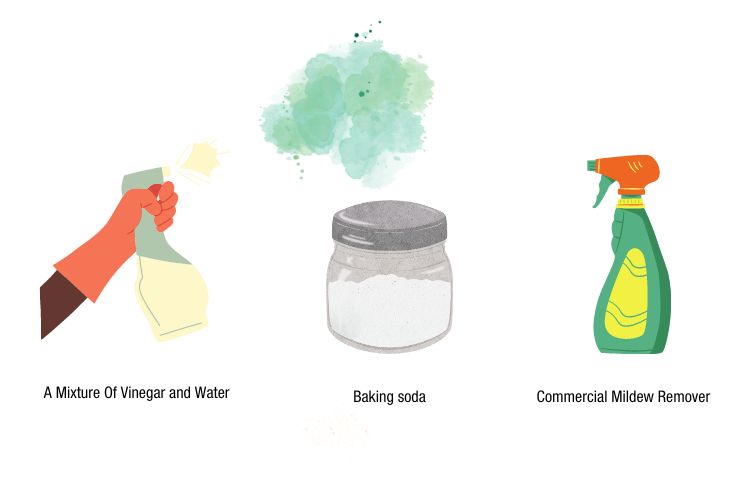How To Get The Mildew Smell Out Of My Car

That musty, unpleasant odor plaguing your car isn't just annoying; it's often a sign of mildew, a type of mold that thrives in damp environments. Left unchecked, mildew can damage your car's interior and even pose a health risk. Fortunately, tackling this problem is achievable with the right knowledge and techniques. This guide will provide a comprehensive, professional approach to eliminating that mildew smell from your vehicle.
Identifying the Source of the Odor
Before diving into cleaning, pinpointing the origin of the mildew is crucial. Common culprits include:
- Wet Carpets and Upholstery: Spilled drinks, tracked-in snow, or even a leaky sunroof can saturate carpets and seats, creating a breeding ground for mildew. Check under floor mats!
- Air Conditioning System: The evaporator core of your A/C system is a prime location for mildew growth. Condensation accumulates during operation, and if the system isn't properly dried out, mold can flourish.
- Trunk Leaks: Water intrusion into the trunk, often from faulty seals around the taillights or trunk lid, can lead to mildew formation.
- Cabin Air Filter: A clogged or damp cabin air filter can trap moisture and foster mildew growth.
Use your nose to narrow down the source. A strong, localized smell is a good indicator. Visual inspection is also key – look for discoloration or visible mold growth.
Initial Cleaning and Drying
Once you've located the affected area, the first step is thorough cleaning and drying. This involves:
- Vacuuming: Use a powerful vacuum cleaner with upholstery attachments to remove loose dirt, debris, and surface mold spores. Pay close attention to seams, crevices, and areas where moisture might accumulate.
- Carpet and Upholstery Cleaning: For carpet and upholstery, use a dedicated automotive carpet cleaner or a solution of mild detergent and water. Apply the cleaner according to the manufacturer's instructions. Use a brush to agitate the cleaner and lift dirt. Extraction is crucial; a wet/dry vacuum cleaner is ideal for removing the cleaning solution and excess moisture. Avoid over-wetting the surfaces.
- Drying: Thorough drying is paramount. Use fans to circulate air and accelerate the drying process. If possible, park the car in direct sunlight with the windows slightly open. For heavily soaked areas, consider using a dehumidifier inside the vehicle. The goal is to completely eliminate any remaining moisture, preventing further mildew growth.
Important Note: When dealing with visible mold, wear a mask and gloves to protect yourself from inhaling spores.
Addressing the Air Conditioning System
If the mildew smell originates from the A/C system, several methods can be employed:
- A/C System Cleaner: These products are designed to kill mold and bacteria within the A/C system. Follow the manufacturer's instructions carefully, typically involving spraying the cleaner into the air intake vents while the A/C is running.
- Evaporator Core Cleaning: In more severe cases, accessing and cleaning the evaporator core directly may be necessary. This usually requires professional assistance, as it involves disassembling parts of the dashboard and HVAC system. A technician can use a specialized cleaning solution and pressurized air to flush out the evaporator core.
- Cabin Air Filter Replacement: Always replace the cabin air filter after cleaning the A/C system. This will prevent any remaining mold spores from recirculating. Consider using a cabin air filter with activated carbon to further neutralize odors.
Ozone Generators (Use with Caution)
Ozone generators can effectively eliminate odors, including mildew, by oxidizing organic compounds. However, ozone is a powerful oxidant and can be harmful to your health. Use these devices with extreme caution and follow the manufacturer's instructions precisely. Never occupy the vehicle while the ozone generator is running. After treatment, thoroughly ventilate the car for an extended period before use. Consider professional detailing services that offer ozone treatment if you're uncomfortable using the equipment yourself.
Preventative Measures
Once you've successfully removed the mildew smell, taking preventative measures is key to avoiding its return. These include:
- Promptly Clean Spills: Address spills immediately to prevent moisture from soaking into carpets and upholstery.
- Regular Vacuuming: Vacuum the interior of your car regularly to remove dirt and debris that can trap moisture.
- Proper Ventilation: Ensure adequate ventilation, especially after driving in wet conditions. Cracking the windows or running the A/C can help dry out the interior.
- Check for Leaks: Regularly inspect your car for any signs of water leaks, paying particular attention to the sunroof, windows, and trunk.
- A/C System Maintenance: Periodically run the A/C system on high with the windows open for a few minutes to help dry out the evaporator core. Consider using the A/C's "fresh air" setting occasionally instead of recirculation to introduce drier outside air.
By following these steps, you can effectively eliminate that unpleasant mildew smell from your car and maintain a clean, healthy interior for years to come.
